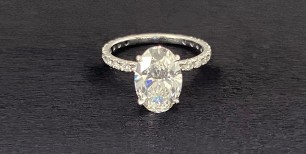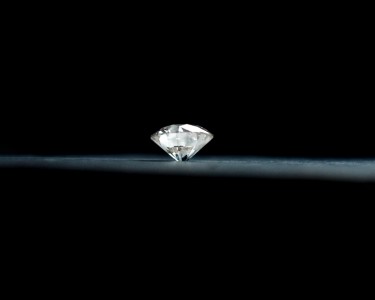
3 tips lab grown diamond
The lab grown diamond, for laboratory-grown diamond is experiencing growing enthusiasm worldwide and now in France. It is more economical, has no impact on biodiversity, and depending on how it crystallizes (CVD or HPHT) and the energy used, its carbon footprint can also be more virtuous than its counterpart, the natural diamond from mines. Its price competitiveness allows individuals to acquire exceptional quality stones (color, purity, brilliance) and also to aim for larger carat sizes. We are seeing a growing demand for high-quality diamonds of 3 carats and more, which were almost unattainable before. You are interested in acquiring a lab grown diamond; here are three tips that may be useful to you.
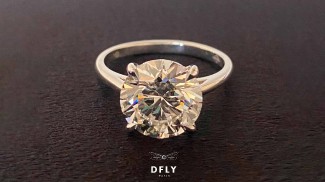
1/ THE FINAL JEWEL IN MIND
How will the diamond be used? If you want a single solitaire of less than 1 carat, a purity level of "VS" (Very Small Inclusions, VS1 or VS2) is more than sufficient, as the stone is too small to be affected by the inclusions. However, the person selecting your stone will ensure that the inclusions are small and located mainly on the back of the diamond. If you want a diamond of 2 carats or more, it is advisable, if possible, to look for a higher purity, "VVS" (Very Very Small Inclusions), which will guarantee you almost no visibility of inclusions. In this category, there are two levels, VVS2 and VVS1, and the price difference between these two levels is significant. By selecting a "good VVS2," you can be completely at ease. For small stones used as side stones or paving on the ring, for example, stay consistent with the central stone(s) (a maximum difference of 2 colors), but the purity can go down to SI (Small Inclusions). Here, we are talking about stones from 1 to 3 mm, where inclusions are invisible to the naked eye.
2/ PROPORTIONS ACCORDING TO SHAPES
Generally, the choice of shape is made beforehand by the future buyer: a round brilliant, a cushion, a pear... However, it is rare for the reflection on the proportions of the stone to be clear. Here are some thoughts on the matter.
ROUND BRILLIANT: Highly appreciated, it is called Round diamond, or Round Brilliant, or simply Brilliant for good reasons. This shape, invented by the Belgian gemologist Marcel Tolkowsky in 1919, features 58 facets that maximize light reflections and the fire of the stone. For this shape, the cut should be at least "Excellent" and preferably "Ideal," as the brilliance largely comes from the perfection of the cut. If the small facets facing each other are not perfectly parallel, the light will not pass through as well as you’d like. Additionally, attention should be paid to having a ratio close to R:1 to have a perfectly round stone, especially for larger stones. Finally, depending on whether you want a high or low jewel for a ring, for example, or if you want to have a wedding band that fits underneath later, attention should be paid to the height of the pavilion.
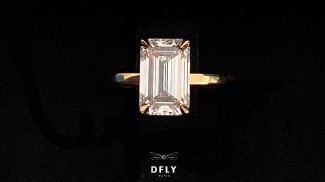
EMERALD: the Emerald diamond shape, which rightly evokes the Art Deco years of the early last century, is currently experiencing a strong appeal. It is offered in proportions that really change the aesthetics of the diamond. For a typical emerald diamond, we look at a length-to-width ratio of 1.45-1.5. But some people will prefer a ratio closer to 1, meaning square or slightly above.
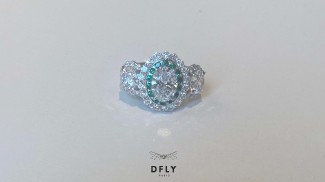
OVAL: With a very slight ratio approaching the round or very elongated, the effect of an oval diamond around the neck or on the finger will be very different. We particularly like a length-to-width ratio of about 1.4, but we are, of course, attentive to the person's preferences.
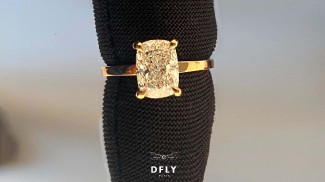
CUSHION: The cushion diamond, with its domed appearance on top, offers a very different impression if it is chosen square or elongated. The square format is the most classic for this shape, but some people appreciate it elongated. It is then close to the classic emerald but with more facets, hence more light reflection. In all cases, care will be taken to avoid too much of a "Bow Tie" effect; indeed, some cushions can show two dark triangles touching at their tips, giving this bow tie effect.
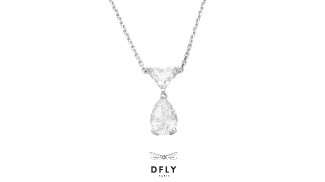
PEAR: the drop-shaped or pear diamond can be more or less tapered; by default, we offer a length-to-width ratio of 1.5 to 1.65, which perfectly reflects the spirit of this special shape.
3/ OTHER CONSIDERATIONS
For several years, the major laboratories that certified natural diamonds have decided, because scientifically it is a diamond, to rigorously certify the lab grown diamond in the same way. It is recommended for lab grown diamonds above 0.30 carats to require a certificate from a major laboratory: the American GIA and IGI or the Belgian HRD are excellent references in this matter. When you have the unique number marked on the certificate provided to you, do not hesitate to verify it yourself on the laboratory's website in the "Verify your report" section.
If you decide to make an investment with your jewel: a/ Prefer 18k gold; yes the prices are high, but its value will remain a safe haven; 18k is the hallmark of fine French jewelry. b/ In terms of choosing a lab grown diamond, regardless of the shape, prefer a very beautiful color, ideally D, the top. Lab grown diamonds are making their appearances in auctions, such as in Ferrara, Italy recently (July 15, 2025), where there were beautiful bids on high-quality lab grown diamonds. c/ Prefer high-quality craftsmanship, meaning with an impeccable level of finish, with hallmarks (metal and maker's marks).
